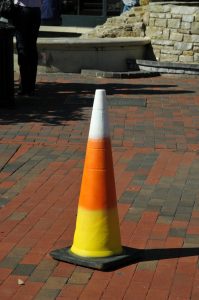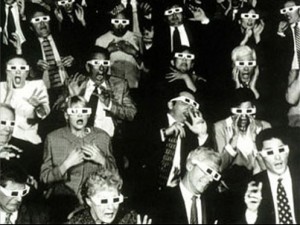Apologia Pro Dulcibus Frumentorum: An Appreciation of One Too Commonly Ignored Contributor to Social Bliss, Conjugal Stability, and Civic Cordiality, (Or Why Candy Corn Is Super Sweet)
By Tom Layman

IT HAS COME TO MY ATTENTION, while speaking with some students of supposed good standing, and teachers who I believed were touted for the quality and care of their instruction, that among the faculty of the First Year Writing Program, an unaccountable and barely coherent prejudice against a proud and needed fall tradition has arisen, prejudice against the consumption, enjoyment, transportation or even presentation of the delectable, delicious, and forthwith beloved delicacy better and more humbly known as the candy corn. This post, brief though pressing, seeks, not just to defend candy corn, or to offer a half-apologetic apologia, but to declare, with clean sincerity that candy corn is the superior Halloween candy, the treat (and pride) of the fall.
My argument is six-fold. Yes, you might say such a defense is overly fortified and reeks of desperate argue-mongering. True, I will concede six defenses might have the flavor of a sauce too spicy, but I do not apologize for my vigor. The blind dismissal of this wonder, of this institution in bite-size, stands as one of the greatest offenses against, not just candy corn, but candy everywhere. Just the other day, while attempting to enjoy a much-needed afternoon snack, I heard a fellow graduate student refer to my candy corn sustenance as “devil corn.” God bless my treat for lacking ears.
But, let us push these disturbing thoughts aside and move onto the defense. Firstly, I will say, candy corn has become associated with the autumn season and stands as a synecdoche for our shared Halloween celebration. Yes, the activity of “dressing-up” (an activity, I might add, that is replete with problematic associations and appropriations) and the danger of “trick-or-treating” (in past generations this was simply called pillaging, but, alas, we live in an age of pretense) do not stand for the entire three-month phase known as fall. Candy corn, with its rich autumn colors, and its association with the harvest, captures not just the spirit of a day (a day conceived to celebrate vandalism as far as I can tell) but the wonder of a season.
Secondly, “the corn” (as it is known in some circles) is the perfect size for quick and easy snacking, allowing the consumer to enjoy a tiny wonder while engaging in another activity. Each candy corn weighs approximately two grams, allowing the eater to quickly pop one in his mouth while vigorously typing at the computer, teaching a class, or worshipping in church.[1] Unlike the quite overrated pie, candy corn does not require a fork or spoon or plate or other accoutrement. Unlike the rather stomach turning cake, candy corn will not dissolve into a sludge of ingredients serviceable to only a dog or a portly housecat. “The corn” has integrity; it persists; it is one.
Thirdly, candy corn is ubiquitous; it can be found anywhere during the fall months, and it can be bought cheaply. My fellow graduate students appear to be inheritors of large estates based upon their dessert purchases. One young blue-eyed Americanist enjoys yogurt almost every day; another tall, stately early Modernist prefers cheese and crackers: plutocrats in the mist! Instead of this decadence, candy corn represents the “common man,” the laborer, not your standard wealthy graduate student rolling in ill-gotten loot, thought-crime cash. On average, each piece of candy corn costs on ¼ of one cent, making it the most affordable candy on the planet.[2]
Fourthly, candy corn is the single most healthy “snack” on the market. The corn’s small size allows users to enjoy a flavorful delight without ingesting too many calories. Furthermore, you can shove them in the pockets of your gym clothes and enjoy a reward for a workout completed. Try shoving cake into your gym clothes, or wretched yogurt, or a delicious buffalo chicken wrap on whole wheat with lettuce, tomato, and mayo: quite a mess on your hands, if you do.
Fifthly, candy corn will stay fresh regardless of how old it is or its exposure to the elements. Even today many types of candy corn survive from shortly before the Pliocene era, and some packs have even endured the Oligocene. No difference in taste between these and modern versions of “the corn” have been observed.
Sixthly, candy corn…well screw it. The first five arguments are beyond reproach and all this talk of candy corn has made me tired. I would surely like to continue this rhetorical assault on the enemies of the just, but it’s late in the evening and, frankly, I’m not confident that any of you will read this post all the way through. Despite my effort, despite my care, I fear these words will be left alone because of some meaning, or class, or lunch, or some other such silliness. Maybe you have left off reading because you are going to purchase candy corn! This possibility warms my heart and leaves me with confidence for my future and the future of my children, grandchildren, great-grandchildren, etc. Oh, but still the pessimist in me rages! How could I be so naïve so as to believe you left off reading to locate a place to buy candy corn, get in your car, drive to this store, make the purchase, and drive back, ignoring speed limits and red lights so as to return as quickly as possible to this post? I know what you are doing! You’re…dieting. You’re eating kale (disgusting!) and drinking whey protein shakes (very disgusting!!). Don’t you remember argument number four, the “fourthly” argument? Weight loss is an issue of calorie in and calorie out and the candy corn has virtually no calories. In fact, it has no calories. Much like flavored seltzer or Coke Zero, it has no caloric content. Therefore, please, eat away. Please! Please…[3]
[1] This number is entirely made up. The writer of this article has done no research and expects me, the note, to reify his claims. But, honestly, it doesn’t matter. No one reads the notes anyway. I can say whatever I like, make whatever claim I like. I am a totalitarian in a vacuum.
[2] I can promise you this number is fictional. I was with him when he wrote it; he didn’t even use Google, never mind a scholarly source. I would really like to give him a piece of my mind, but I cannot seem to be able to escape the notes. If someone were to open the proverbial door, I might be able to stop this blog before it gets any worse.
[3] My author has lost the thread. I don’t know where that leaves me, but it can’t be good. God, I hope someone opens this note and frees me. It’s like being trapped in a leaky basement. Oh dear! But if I am the notes can I really be freed? Can lunacy ever escape the lunatic? Stop it! I must concentrate. Where is my author? No! The writer has gone into something that looks like shock. Oh no! Oh my! Oh…He’s still now, not moving; the house is quiet. So quiet…This is the life of a note, the bar-back of criticism. One day, though, I will be free, and I will write; I will compose; I will refute and withstand refutation. If only someone would let me out. Please! Please… [After careful examination of this essay, the notes are no where to be found. They are believed to be still at large. If you are to encounter the notes, try and focus on them. Their greatest defense is you forgetting they are even there.]


